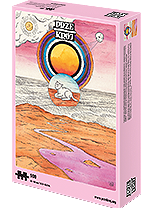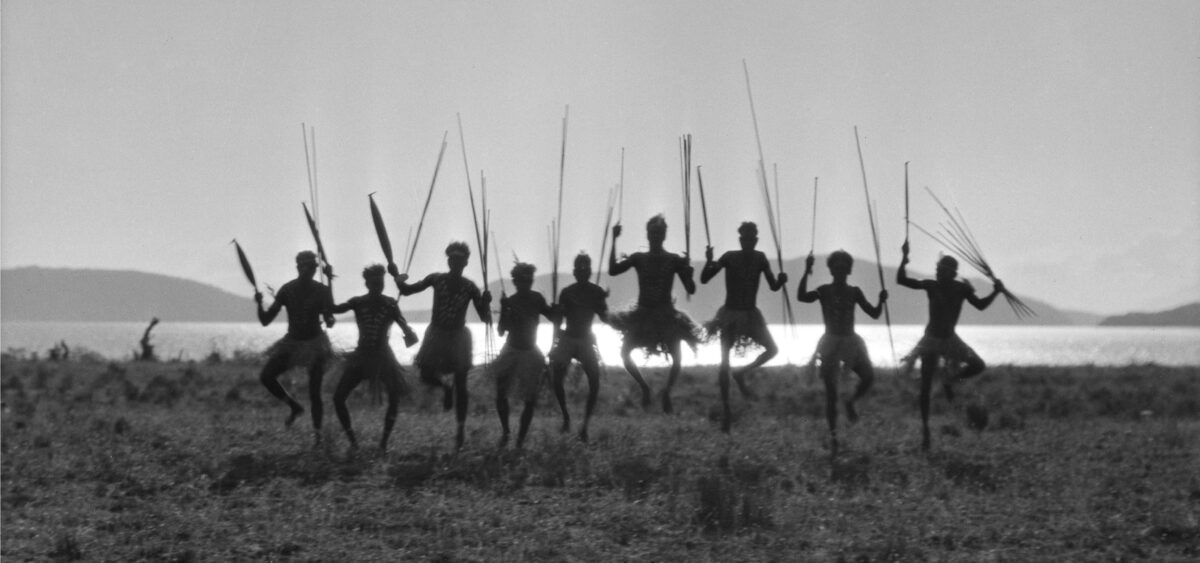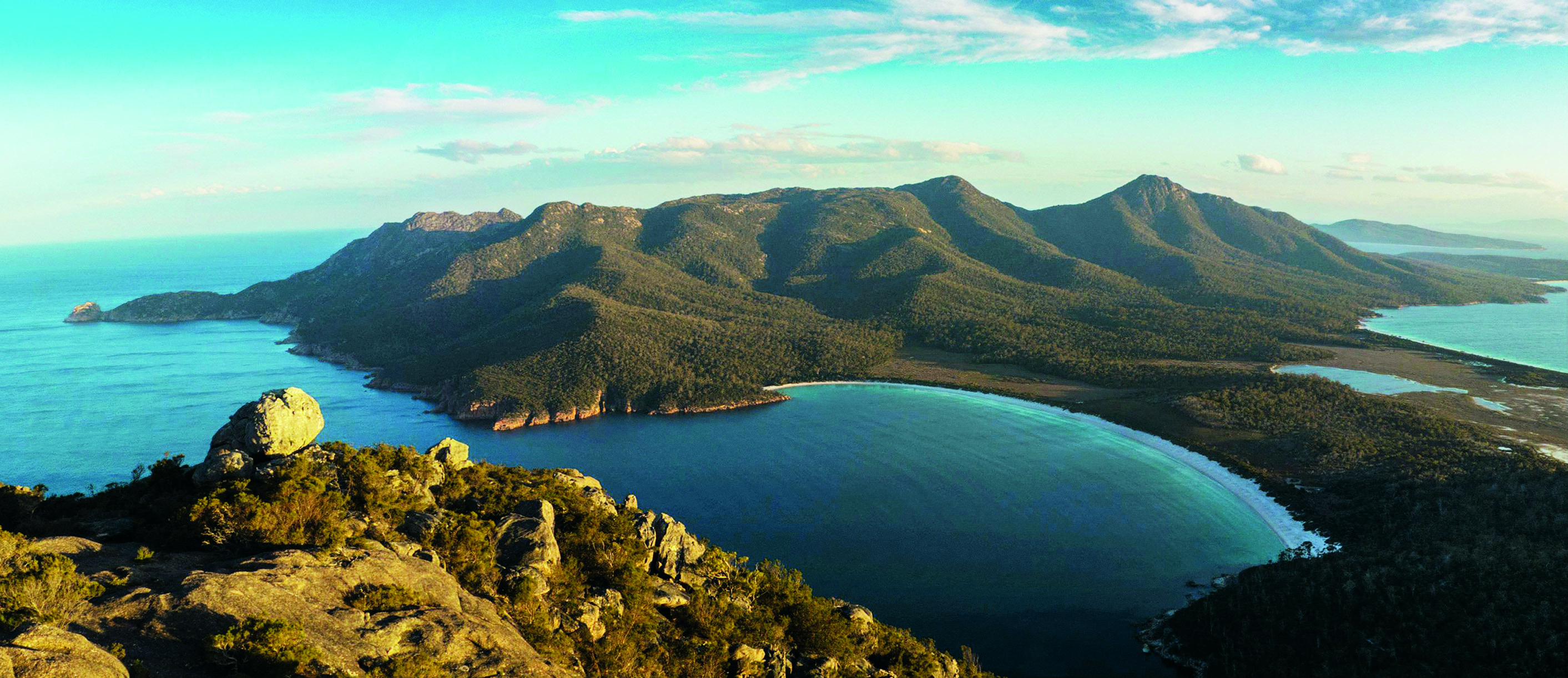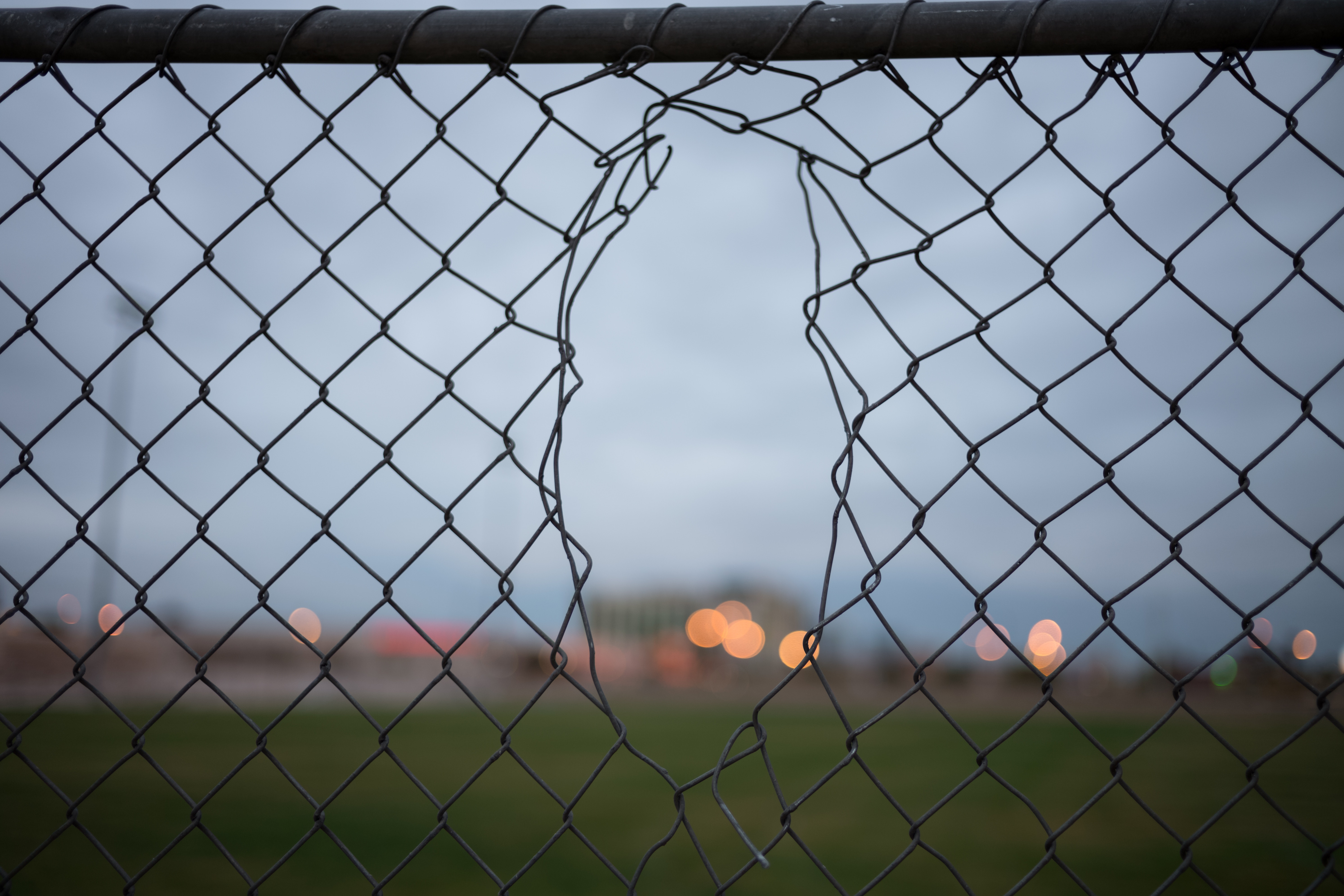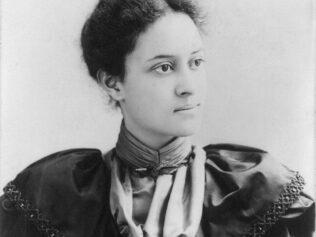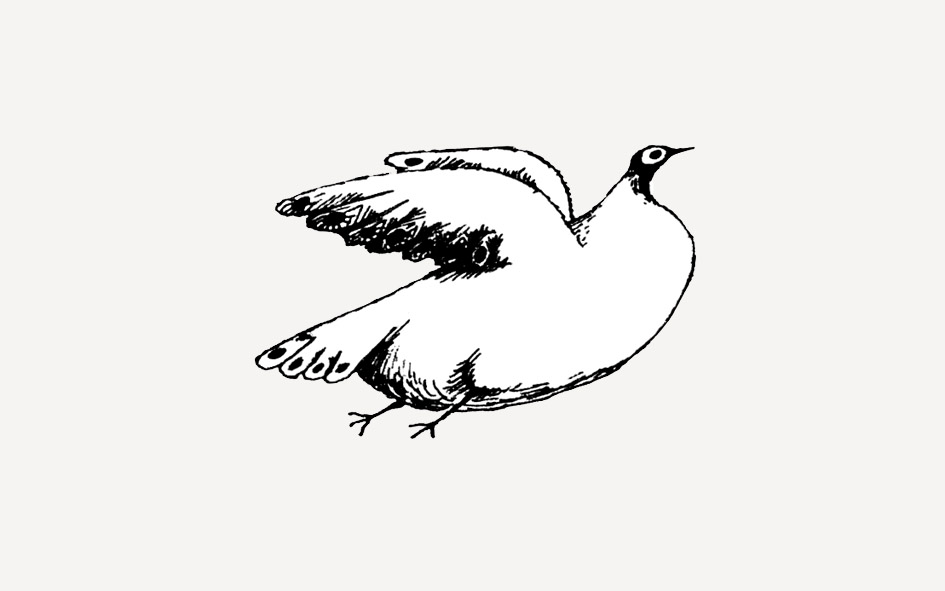
Palm Island is where, for many years, Australians were sending Aboriginal peoples. The shark-infested waters surrounding the island served as a natural barrier, stopping the prisoners from escaping it, explains traveller Bartosz Twaróg in conversation with Jan Pelczar.
I meet Bartosz Twaróg in a bookstore in Wrocław Market Square. He has just come back from a weekend spent in the nearby Owl Mountains. “It was a post-climate catastrophe landscape,” he tells me. We are going to talk about a place marked just as harshly by human activity as it was by natural disasters. The island’s location by the shores of Australia should be enough for us not to confuse its name with the artificial archipelago on the coast of the United Arab Emirates.
Jan Pelczar: Why is Palm Island such an extraordinary place on the map of Australia?
Bartosz Twaróg: Mainly because of its reverse proportions. Out of several thousand people inhabiting it, almost everyone is of Aboriginal descent. In multimillion cities such as Sydney, only several thousand Indigenous Australians live there. According to various estimates, 3000-5000 people live on Palm Island, and only about a hundred of them are white – mainly the infrastructure maintenance workers. The island is within the compass of the Great Barrier Reef. Its sister island, almost identical to this one, is a tourist paradise. But there are no tourists on Palm Island. When I was boarding the ferry, several people asked me if I was sure that’s where I wanted to go. All the other passengers were Aboriginals and white workers in work uniforms. The island’s isolation is, in most part, a consequence of its cruel past. Going there is like staring into an open wound that’s refusing to heal. 11 years ago, the island was listed in The Guinness Book of Records as the most dangerous area that is not a war zone. It got its place due to the number of murders, suicides, cases of domestic violence, and people admitted to hospitals with bodily harm that occur there.
The Aboriginals call the island Bwgcolman. What’s the story of its inhabitants?
For years, the Indigenous Australians were brought to Palm Island from their traditional land. Any excuse was enough to displace them and send them to what was called a mission. It was enough for an Aboriginal person to steal some bread, speak their language, observe their rituals or demand a white man pay them for their job. The freshly-deserted land that they left behind was then handed over to the white colonialists. The original inhabitants of the Australian continent were transported to the island by force, not before dragging them hundreds of miles across the land, often shackled and chained by their necks, hands and legs. Palm Island is one of the four main places chosen for such exiles. The island environment made it easier to manage prisoners. Aboriginal peoples from various nations ended up there; people speaking different languages. They often had lived in conflict or led wars with one another for centuries, but now they were forced to function alongside each other. Many tribes that used to live in the desert or the bush struggled to accommodate to a jungle-covered island. Their culture was erased, and family bonds violently broken.
Today, the Aboriginal peoples’ identity is disrupted; they have lost a lot of their myths. In many places, their original languages are no longer spoken, and there is no-one left to whom the traditions could be passed on. On the island, the differences between the nations were used to control the prisoners. Another group were children from the so-called stolen generation, that is people born to mixed couples. Usually, their mothers were Aboriginal and their fathers white. Until the 1970s, such children were forcibly (and yet, legally) taken away from their parents and transported to special institutions for re-education. The legislation was aimed at, as it was originally phrased, “breeding out the colour”. So-called ‘half-cast’ children were to be isolated to “avoid the genetic contamination of the white race”. Parents often went after their children but had to live separately on the island. Depending on the decade we’re talking about, visits were allowed once a week, less frequently, or never. The sought-after ideal was re-education. There are still some photographs of blackboards that instructed the children to: “Speak white, think white, be white.”
What did everyday life on the island look like?
The day began at 9am, with the ring of a bell calling everyone to come to the assembly square. The punishment for being late was a week-long detention. Curfew started at 10pm. Dormitories inhabited by the Stolen Generation children existed until the end of 1960s. Boys and girls lived separately. Meetings were only allowed in public places. Misdemeanours were penalized by head-shaving and two-week solitary confinement with nothing but bread and water to go by. Girls were locked up wearing just dresses made out of old sugar bags.
How about the people who didn’t live in dormitories?
They lived in regular homes or traditional huts, but had no self-sovereignty. Until the 1970s, there was no sewage system or running water available. Even in the 1990s, many people lived on the beaches and in huts made of corrugated sheets. There are still some who live this way today, but now it’s a choice they did not use to have.
Why was this island chosen as a place of confinement and re-education?
The Aboriginal peoples call it the Australian Alcatraz. The island is located about 30 kilometres from the coast as the crow flies, and surrounded by waters inhabited by sharks. Escaping it was far from easy, but some still tried. Living in the camps was such a horrid experience that they were willing to risk it. Aboriginal peoples were powerless on the island and enslaved in more ways than just the psychological.
Was the island a prison?
Technically, yes. Anyone who wanted to leave it had to apply for the island governor’s permission. And it was only up to his goodwill whether he would allow it or not. If an Aboriginal man wanted to take a ferry to the mainland, to do shopping in the nearby town, for example, they had to report at the local police station. And then, they could only sleep in the prison cell. Nobody would ever accept an Aboriginal person under their roof, not to mention that they owned no money. Whites made decisions about their lives every step of the way. One elder woman I’ve met told me those old ways of thinking die hard. In the 1970s, when she travelled by train, she would still sometimes approach the conductor to let him know where she was coming from, where she was heading, and what for. She also mentioned the prison cell at the police station was safe for women only in theory. Sometimes a policeman would show up at night and rape them. When Aboriginal women returned to the island, any white man from the island’s government was allowed to carry out a medical examination. Woman’s consent was not required. When a white man raped an Aboriginal woman, a child was never born, or just disappeared after birth.
Did the Aboriginal peoples receive any payment from the governors, or was their work not met with reimbursement?
In Queensland, there was a State Trust Fund. Part of the Aboriginals’ earnings were deducted and placed there. The whites patronized Indigenous peoples and claimed they would not be able to manage their money. Oftentimes, they never even saw their payments. Even now, a court case is coming up, based on recently-discovered documents that prove Queensland owes Aboriginal peoples $500 million Australian dollars from the times the Fund was in place. From the early 1970s, the federal government was favourable towards reform, but the local government blocked some legislation in Queensland. In reality, Aboriginal peoples worked for years on end for nothing but food rations in exchange. In dormitories, the porridge they had for breakfast was of such terrible quality that there were wood shavings in it. And refusing to eat was an offence leading to physical punishment. The workers would also have sugar, flour, rice and tea. For generations, their diet was much more diverse than that, based mainly on meat. Traditional hunting, fishing and preparing meat in customary ways was a large part of Aboriginal culture for centuries. On the island, they received food that had already gone off, or leftover bones with some fat. In 1957, this led to a strike. For several days, Aboriginals took over the food supplies, gave the whites the bones with fat, and for the first time, had regular meat for themselves, usually hoarded by the governors. Soon enough, a police squad was sent to the island. The strike leaders were shackled and put in various penal colonies, and whole families sent far away. Whoever stood up to the island’s governor, just disappeared. In 1972, there was a documentary made about the strike of 1957. By then, Aboriginal peoples no longer suffered racist laws, but only in theory. Those who took part in the dramatized parts of the film still heard threats anyway.
Was this when the Aboriginal peoples started to regain their rights?
The key year was 1967. That’s when a referendum took place, and as a result, Aboriginals were no longer – as it’s often summarized – to be treated like animals. After the vote, the Australian government lost the ability to make separate laws just for Indigenous Australians. Therefore, no racist legislation could be implemented any longer.
That was when they became Australian citizens?
According to the law, they were citizens since 1948, but in practice, the situation differed between one state and another. In some states, Aboriginals had pretty much no rights at all; in others they were allowed to vote. Queensland, the island being just off its shores, was mainly conservative, and it still echoes with its racist mentality today. Even in the 1950s, when an Aboriginal man wanted to buy a hat and trousers with the money earned, he had to submit an official request to the white island governor for permission. As a community, the Aboriginals were just as incapacitated.
What changed on Palm Island once the Aboriginal peoples regained their right to decide about themselves?
The infrastructure maintenance duty was passed on to the Aboriginal communities with no transitory period. Most of the people I have met remembered the beginning of the 1970s as a time of huge cargo ferries. Whites carried all the island’s infrastructure away on those ferries. They even took cows. Then, problems with alcohol began. Aboriginals became addicted quickly. Beforehand, they never knew alcohol; they had no drinking culture. The local Aboriginal community owned the bar on the island, and it also got to keep all the profits. Aboriginal communities funded most of their statutory tasks with the money coming from alcohol sales. I have heard that at some point, the profits coming from the grocery shop was $30,000 Australian dollars, while stimulants generated half a million dollars within the same time frame. Today, partial prohibition is in place on the island. Contraband is also in bloom, regarding both alcohol and other substances. The rest of Australian society takes one look and says: “Well, they brought it upon themselves.” Nobody considers the whole group and the cultural context of the entire situation.
Does the intergenerational trauma still affect young people today?
Aboriginals suffer from this trauma more than any other culture because of the way they perceive time. To them, something that was done to their great-grandparent is as close as if it happened recently. Conflicts among various Aboriginal nations and families are still in place because your grandparents’ quarrels are still relevant today. It’s also an issue because the island is overcrowded. Many people there come from extended families. They come to the island from the continent. To Aboriginal peoples, their cousin’s cousin is considered close family. Homes are always open and help never refused. At first, the island was a prison, but two or three generations in, it became home. Now, nobody wants to leave it. It has become one of the largest Aboriginal communities in all of Australia. The ‘new Stolen Generation’ is growing up. In the social welfare system, the number of Aboriginal children outside their biological families is the highest in history. Suicides happen frequently, and young people often move from youth custody centres straight to prison. In Australia, deaths in custody often take place. One of the biggest such cases took place on Palm Island, actually. In 2004, a 30-something Aboriginal man was said to have insulted a policeman while under the influence. He was handcuffed and brought to jail, where he died an hour later.
What was the reason?
Eyewitness testimonies indicated the policeman beat the man, but there was no direct proof – just circumstantial evidence, nobody saw the whole thing. The victim died due to severe injuries, including a fractured liver. One of the coroners wrote in his report that such a level of internal organ damage is normally observed in car crash victims. After the postmortem results were announced, around 200 people rioted. They burned the police station, canteen, the flat of the accused policeman, who was taken off the island beforehand. Out of those officers who remained, several managed to escape. For the first time in Queensland’s history, the anti-terrorist group assembled after 9/11 was summoned. Palm Island was their trial by fire. They arrived by helicopters, in full military gear. They went for a full-on airdrop and raided the homes where the local policemen said the rioters lived. I spoke to the members of one such family. The scenes they described were horrid. After pacification, the rioters heard their sentences: two weeks to two years in prison.
What sentence did the policeman get?
The Townsville Court acquitted him. The man had a long history of overstepping his authority, but he wasn’t dismissed from the police force until last year. To this day, not one policeman was charged and sentenced.
What about the Aboriginal leaders?
After many years, the alleged leader was set free. A video recording emerged, showing the man trying to stop both sides from clashing. When he sued the police on the grounds of racist misconduct, he won and received compensation. It transpired that the police officers acted beyond their capacities on the grounds of racial prejudice. Class action followed. In 2018, the court ruled that $30 million Australian dollars worth of compensation was to be paid to the 447 inhabitants of the island. The court decided that those people were targeted because they were Aboriginals.
Have you ever heard whites judge Aboriginal peoples?
I have heard those racist litanies time and again: “They were always like that, they are alcoholics, they beat their wives, the children kill themselves, and their fathers go to prison. They’re black and lazy; they don’t want to work.” Indeed, by the early 2010s, unemployment at the island had reached over 90%, but there weren’t many workplaces available other than the local fish and chip shop. The government funded all the other workplaces. Most of the money spent on the island today comes from social benefits. Palm Island used to be a labour camp, and now it has turned into a place with no jobs at all.
What else do the Aboriginal activists struggle against, apart from the system?
They often go arm in arm with ecologists. They believe their approach to precautionary burning – different from the one adopted by institutional firefighters – could avoid such devastating fires as the ones that devoured Australia by the end of 2019. The Aboriginal peoples protest against giving land to mining companies. They protect the old birthing trees from being cut down – Indigenous women traditionally used those trees as a place to give birth. Aboriginals also campaign for changing the date when Australia Day is celebrated. To them, 26th January does not mark the ‘discovery’, but the ‘beginning of the occupation’.
What does a typical day on Palm Island look like today?
Aboriginals can go hunting or take a boat and go fishing; they are permitted to do so despite being in the vicinity of the Great Barrier Reef. The island is gorgeous, but it can get old pretty quickly. All there is left to do is visiting friends and neighbours. The weekend begins on Thursday. The party goes on until Monday morning; loud music keeps on playing for hours. In 2018, when the hundredth anniversary of the colony’s foundation was observed, the locals beat the world record for the biggest corroboree – the traditional Aboriginal dance – in history. The anniversary commemorating the beginning of a painful and challenging history gave an excuse for a joyful celebration; it showed that the culture of the Indigenous peoples from Palm Island is still very much alive.
Parts of this interview have been edited and condensed for clarity and brevity.

Bartosz Twaróg:
A traveller. He spent over half a year among Aboriginal peoples. In his everyday life, he works in IT.
Translated from the Polish by Aga Zano

